He Set Up A Camera Trap In The Amazon. These Are The Rare Animals It Captured On Film
September 22, 2015
Wildlife photographer Jeff Cremer set up a camera trap in the Peruvian Amazon and got some great shots of rare animals. Luckily, he was able to get these photos off the memory card before it was completely devoured by termites...
Puma
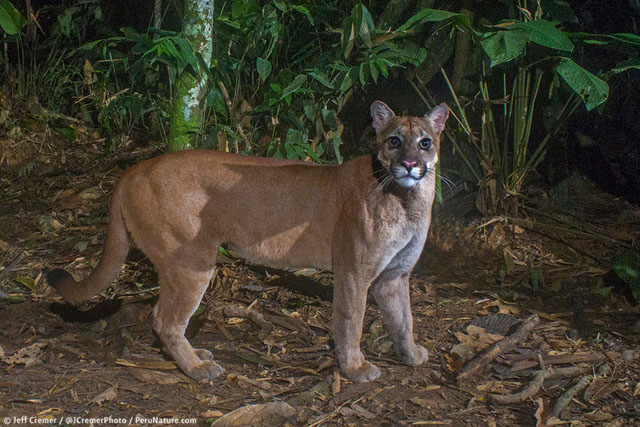
Credit: Jeff Cremer / PeruNature.com
It seems like Mr. Puma was walking through the jungle one evening minding his own business when a camera took his picture. Mr. Puma turned towards the sound while the camera took another pic. He then walked right up to the camera and looked at it with a sad face then walked off.
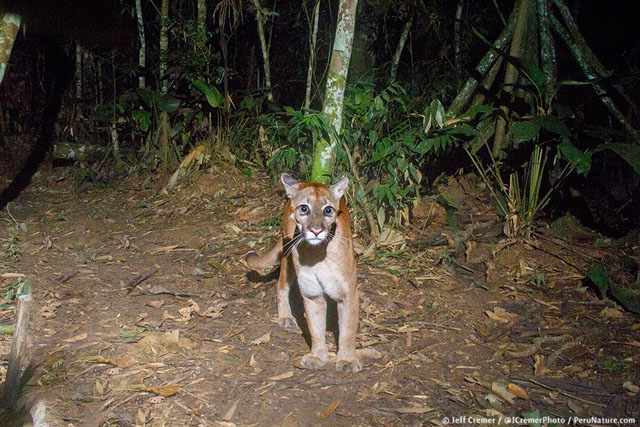
Credit: Jeff Cremer / PeruNature.com
Puma are huge iconic predators of the amazon. They are the fourth largest cat in the world with adults stands about 60 to 90 cm (24 to 35 in) tall at the shoulders. Pumas are, like most cats, are metaturnal. That means that they sleep partly through the day and partly through the night. These agile yet powerful cats hunt by stalking and ambushing their prey. They like to feed on tapir but sometimes feed on smaller animals.
Giant Armadillo
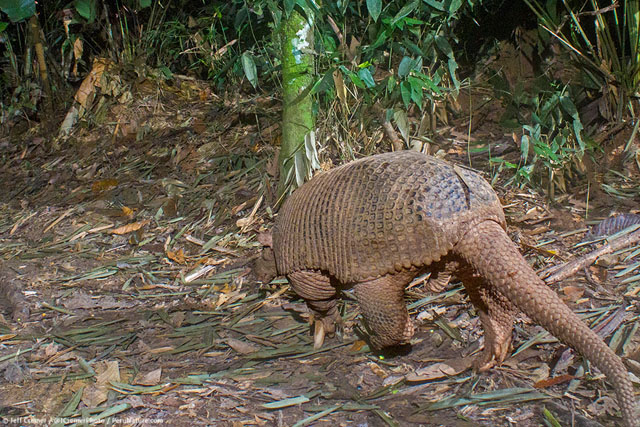
Credit: Jeff Cremer / PeruNature.com
These guys are super rare. There are only two or three per every 100 square kilometers. The necks and backs of giant armadillos are covered in flexible "armor" consisting of 14 to 17 moveable bands of horn and bone. The head and body of giant armadillos measure 30- to 40- inches long, and their tails reach about 20 inches. Armadillos can reach 130 pounds, but most weigh between 40 and 70 pounds.
Tapir
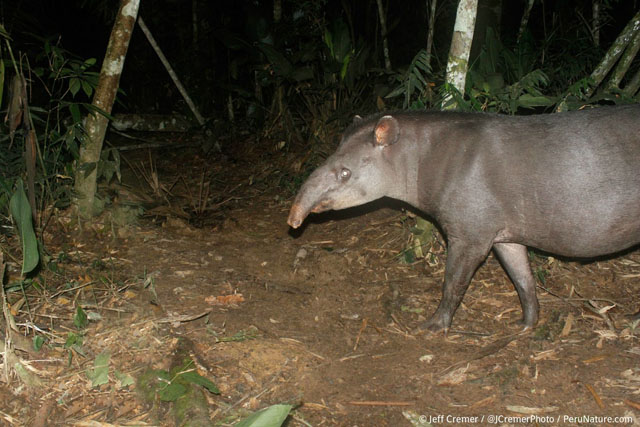
Credit: Jeff Cremer / PeruNature.com
Tapirs are the largest mammals in the Amazon, but their large size doesn’t mean they’re easy to find. Tapirs are notoriously difficult to see with one tapir researcher spending over a year in the field only to catch a glimpse of just one in person! These odd-looking creatures look similar to a horse but are actually more closely related to the rhinoceros.
Peccary
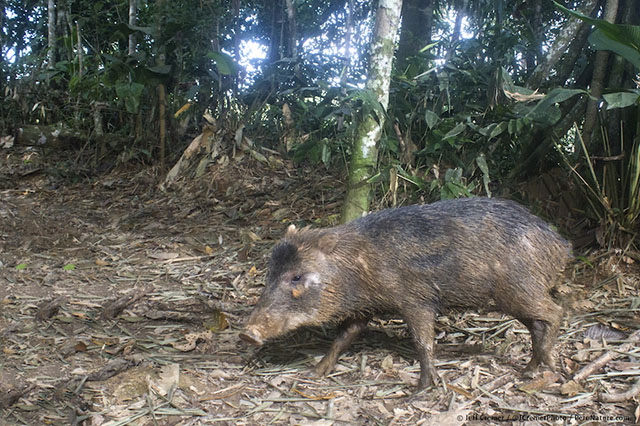
Credit: Jeff Cremer / PeruNature.com
Peccaries are a type wild pigs that can be found in the rainforest of Tambopata. This large pig quickly disappears from areas subject to hunting and deforestation. They seem to require large, unbroken tracts of lowland rainforest such as those of the Tambopata region. Seeing Peccary here is a good sign and means that this part of the rainforest is still healthy.
Margay
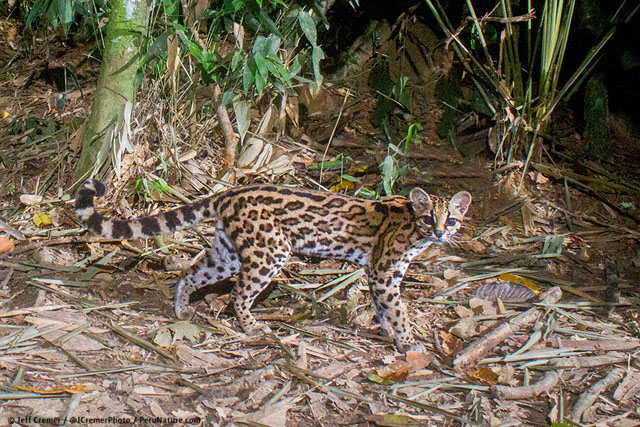
Credit: Jeff Cremer / PeruNature.com
These "mini-jaguars" are an awesome find. They are nocturnal and live most of their lives in trees. They look like ocelots but have a smaller body size, longer tail, larger eyes, bigger, rounded ears (all in respect to body/head size). Margay are nocturnal and spend most of their lives in the trees but sometimes come down to hunt rats and other small mammals.
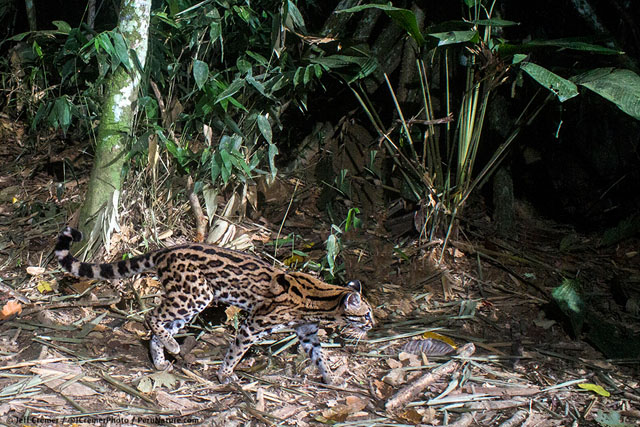
Credit: Jeff Cremer / PeruNature.com
Of all of the felines, the Margay is most adapted for a true arboreal life. It is the only cat to possess the ability to rotate its hind legs 180° , enabling it to run head first down trees like squirrels. It can also hang from a branch by one hind foot!
Spix's Guan
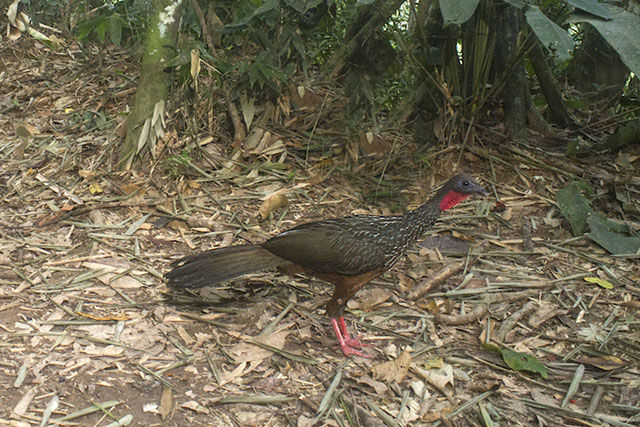
Credit: Jeff Cremer / PeruNature.com
A guan is an arboreal bird that somewhat resembles a turkey in size and shape. They are another sign of a healthy rainforest since in places where hunting occurs the large birds become easy and desired targets and quickly disappear.
The Camera Trap
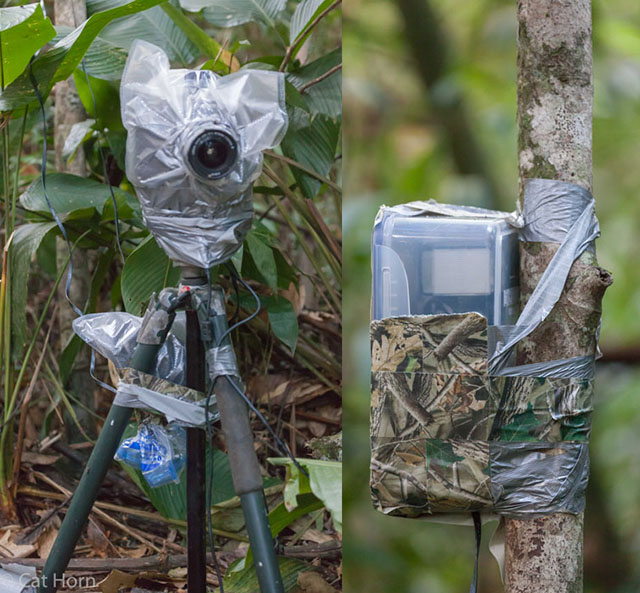
Credit: Jeff Cremer / PeruNature.com
A camera trap is a remotely activated camera that is equipped with a motion sensor or an infrared sensor as a trigger. Camera trapping is a method for capturing wild animals on film when researchers are not present, and has been used in ecological research for decades.
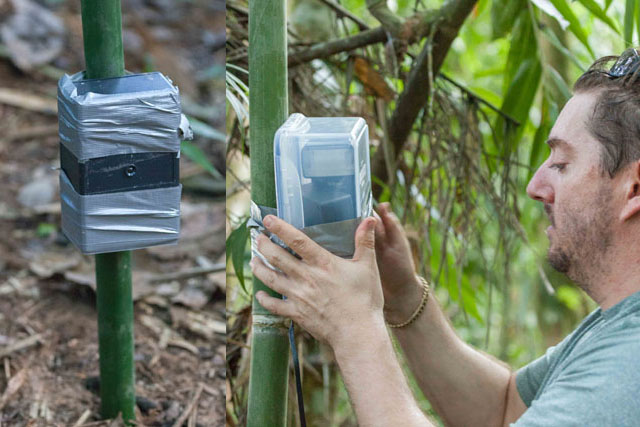
Credit: Jeff Cremer / PeruNature.com
I got a big surprise when I came back to check on the camera trap. When I walked up to the camera I saw that a colony of termites had started building a nest inside and around his camera, destroying it in the process.
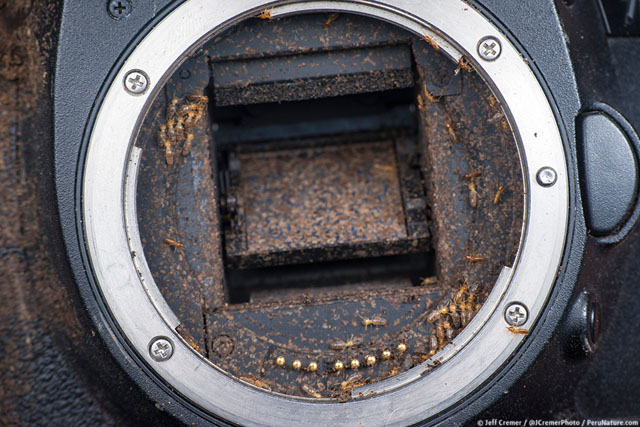
Credit: Jeff Cremer / PeruNature.com
At first I thought that they only got at the outside of the camera and that it would be fine, but when I took the lens off I saw that they were inside the camera started building on the lens as well.
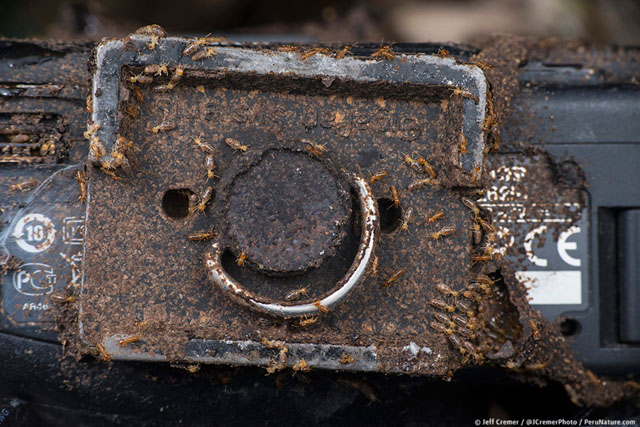
Credit: Jeff Cremer / PeruNature.com
They even started eating the memory card that was inside the camera.
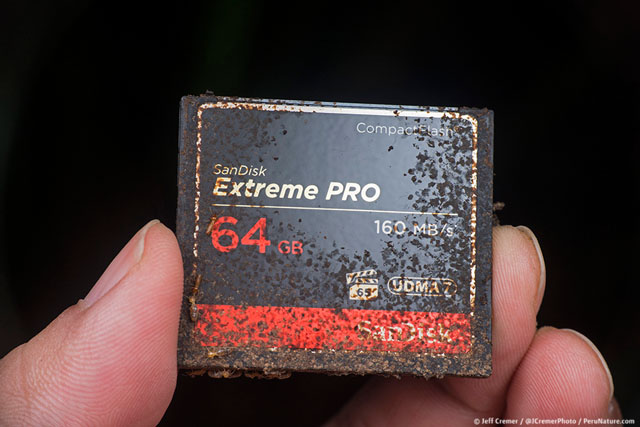
Credit: Jeff Cremer / PeruNature.com
"In the Amazon, every single niche is exploited, including Canon camera bodies. Maybe because Jeff weather proofed it so well the termites found it to be a suitable fortress to colonize." says entomologist Aaron Pomerantz.
Jeff is always in the jungle finding cool new things. Follow him on Twitter @JCremerPhoto and for cool animal videos, subscribe to his YouTube channel.
Click Here For The Most Popular On Sunny Skyz
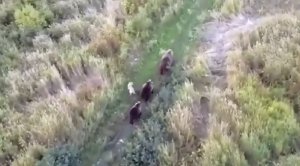 A Husky Was Lost. Owners Found Him With A Drone - Hanging Out With Bears
A Husky Was Lost. Owners Found Him With A Drone - Hanging Out With Bears
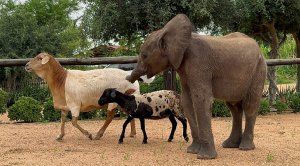 Journey To Belonging: Orphaned Baby Elephant Walks With New Herd
Journey To Belonging: Orphaned Baby Elephant Walks With New Herd
 NBA Player Invites Old High School Coach To Live With Him After His Wife Passes
NBA Player Invites Old High School Coach To Live With Him After His Wife Passes
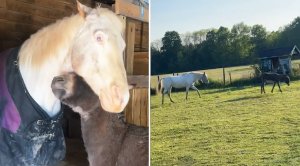 Friendly Donkey Serves As A Guide For A Blind Horse
Friendly Donkey Serves As A Guide For A Blind Horse
 A First Birthday Reunion Party For The Whole Litter, Mama Pup Included
A First Birthday Reunion Party For The Whole Litter, Mama Pup Included
 This Senior Dog Sanctuary Celebrated 12 Years With A Dog Prom
This Senior Dog Sanctuary Celebrated 12 Years With A Dog Prom
 A Husky Was Lost. Owners Found Him With A Drone - Hanging Out With Bears
A Husky Was Lost. Owners Found Him With A Drone - Hanging Out With Bears
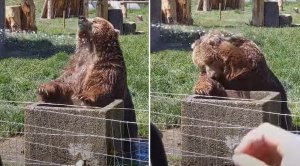 Absolutely Adorable: Watch This Bear Wash Her Hair
Absolutely Adorable: Watch This Bear Wash Her Hair
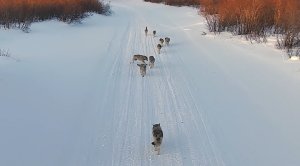 Wolfpack Greets One Their Own After Separation
Wolfpack Greets One Their Own After Separation
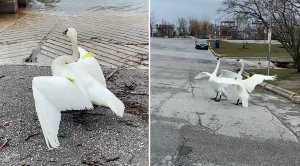 'It Was A Magical Romance Moment From The Movies': Two Swans Reunite After Rehab
'It Was A Magical Romance Moment From The Movies': Two Swans Reunite After Rehab
 Can't Stop Laughing: Woman Screams, Runs From Angry Honking Geese
Can't Stop Laughing: Woman Screams, Runs From Angry Honking Geese
